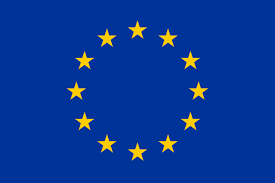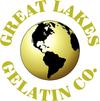Health Information
Allergen Free
| Peanuts | None |
| Eve | None |
| Sesame | None |
| Seeds | None |
| Fish/Shellfish | None |
| Dairy | None |
| Eggs | None |
| Soy | None |
| Wheat | None |
| Gluten | None |
| Corn | None |
| Mustard | None |
| Celery stalk/leaf | None |
| Yeast or yeast derivatives | None |
| Lupine | None |
See Test Results:
MSG Free
Gelatin is a hot water soluble protein extracted from collagen. Individual collagen proteins have molecular weights of between 95,000 and 125,000 Daltons, but the fibers are massive aggregates and do not have a defined molecular weights. To make gelatin, collagen rich materials (mostly bovine or porcine hides) are cleaned and treated with dilute acid and heat to denature (untangle) the collagen into water soluble proteins. The extract is purified and spray dried to form the gelatin powder. Essentially, gelatin is a thermally denatured (melted) form of collagen that makes the proteins soluble in hot water. Collagen and by inference the gelatin proteins contains approximately 11% glutamic acid as part the protein chains (not free glutamate). As a matter of fact, gelatin is rather low in glutamic acid content compared with other common food proteins. The grams of bound glutamic acid (not free) per 100 grams total protein in common foods are given in Table 1 below.
Table 1. Percent Glutamic Acid in Common Food Proteins.*
- Wheat Protein 31%
- Cow Milk 22%
- Corn Protein 18%
- Beef Meat 16%
- Rye Protein 24%
- Poultry Meat 17%
- Rice Protein 15%
- Fish Protein Conc. 17%
- Soy Protein Conc. 17%
- Mammalian gelatin 11%
* From Food Chemistry 2nd Edition (1999) H.D Berliz & W. Grosch, Springer-Verlag, Berlin
Great Lakes Gelatin also sells collagen hydrolysate. This material consists of enzymatically treated collagen with an average molecular weight of ~5,000 Daltons (Mw Glutamic acid is 147.13 Daltons). Great Lakes Gelatin has spent time with an outside laboratory to analyze both gelatin and the enzymatically hydrolyzed collagen. Total free amino acid and free glutamic acid as % weight of solids (Table 2) were determined by an independent testing laboratory using HPLC (Northland Laboratories Analytical Test).
Table 2. Free Glutamic Acid in Gelatin Products
- ProductTotal Free Amino AcidsFree Glutamic Acid
- Gelatin0.14%0.01%
- Hydrolyzed Products0.41%0.09%
To put these numbers in perspective, we can compare this level with several foods and the level of glutamic acid normally circulating in our bodies. The fasting level of free glutamic acid in human serum is about 220 micromoles/Liter (32 mg/L) (Geigy Scientific Tables (1984), Volume 3, page 93, Ciba-Geigy Ltd, Basel, Switzerland, C. Lentner Editor). So, a 10% solution of gelatin (higher than in Jello type products) would contain 100 g/L of protein and 10 mg/L of free glutamic acid. For the hydrolyzed water soluble product we suggest 10-12 grams/serving up to twice a day for a total free glutamic acid ingestion of 0.9 mg. Table 3 gives the amount of free glutamic acid in common foods. These are not added MSG, these are the amounts in untreated products.
Table 3. Free Glutamic Acid in Common Foods
- Product Free Glutamic Acid
- Orange Juice 60-710 mg/L
- Grapefruit Juice 280 mg/L
- Lemon Juice 60-350 mg/L
- Honey 29.4 mg/kg dry weight
- Human Break Milk 270 mg/L
As you can see, the amount of glutamic acid in gelatin and the partially hydrolyzed product are very low.
Please note the glutamic acid in gelatin at 11% are bound in the protein chain. It is only the free (not bound) amino acid that is a cause for concern. Free glutamic acid results with gelatin is at 0.01% and collagen hydrolysate is at 0.09%. Typically you find more free glutamic acid in human blood than in our gelatins.
Kosher Certificate
Paleo Friendly and KETO Certified
Our collagen and gelatin products are Paleo friendly and KETO certified by the Paleo Foundation.
 EU
EU
